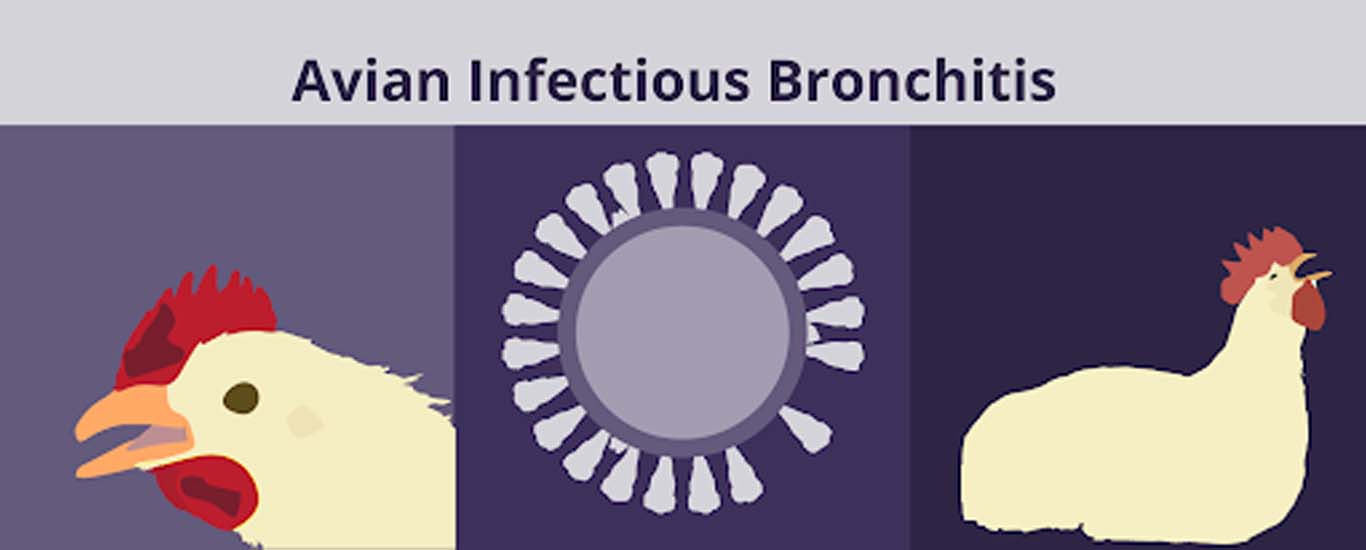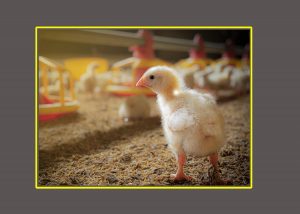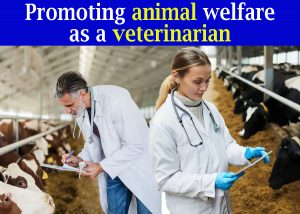
Avian Infectious Bronchitis Virus (IBV) of chickens is currently one of the main diseases associated with respiratory syndrome in domestic poultry, as well as with losses related to egg production .IBV was first recognized by United States of America in the 1930. It accursed worldwide and assumed a variety of clinical forms. IBV has a significant economic impact; in broilers, production losses are due to poor weight gains, condemnation at processing and mortality, whilst in laying birds, losses are due to suboptimal egg production and downgrading of eggs. Chickens and commercially reared pheasants are the only natural hosts for IBV.
Etiology
The disease is caused by IBV a corona-virus (Coronaviridae, Orthocoronavirinae, genus Gammacoronavirus, subgenus lgacovirus). It was first isolated in 1930. By definition, IBV is a corona virus that affects domestic chickens, and replicates in respiratory tissues, as well as in other epithelial tissues, including the kidneys, gonads, and bursa.
Clinical sign
Following are common signs indicating IBV.
- Respiratory form:
Respiratory disease is the most frequently observed syndrome caused by IBV. In broiler chicks of between two and six weeks of age, the main clinical signs seen are difficulty in breathing, tracheal rales, coughing and sneezing with or without nasal discharge. A generalized weakness is observed, accompanied by depression. Feed consumption and body weight are markedly reduced. The chronic respiratory disease that develops may last for several weeks, with mortality between 5% and 25%. On necropsy, the trachea is congested with excessive amounts of mucus, and where infection has been complicated with E. coli, airsacculitis, pericarditis and perihepatitis may be observed. Similarly, the presence of Mycoplasma results in more severe clinical signs, with depressed growth.
- Reproductive form:
Infectious bronchitis damages the reproductive organs of mature chickens, so although they may return to production six to eight weeks after contracting the disease, they may never produce well again. It also drop in egg production may sometime be more than 50%, loss of egg quality, poor albumin and soft shelled.
- Urinary form:
When the kidney is affected, increase water intakes, depression, scouring and wet litter are commonly observe. Young growing birds of 3-6 weeks of age are mostly affected .Mortality may reach up to 30%.
Transmission
It’s the most contagious poultry disease, and it spreads rapidly. It’s transmitted by contact with infected birds, contact with contaminated equipment, and can travel over 1000 yards through the air. The disease will infect a flock within 48 hours, and those birds that survive usually recover within 2 to 3 weeks.
Diagnosis
- Isolation or identification of the causative agent is required for a definitive diagnosis of IB.
- Testing serum samples at intervals (for example at the time of the clinical signs and 2 or 3 weeks later) provide the best basis for serological diagnosis. This is also applicable for monitoring vaccination results.
- Laboratory tests to identify the viral genome, viral antigen (proteins) or antibodies against the virus are important to confirm IBV infections.
Treatment
There is no specific treatment, although supportive treatment with antibiotics to control secondary infection could be beneficial. The rate of spread can be very rapid and therefore infected flocks should be isolated to prevent the spread of disease. Supportive treatment, such as increasing the temperature of the house by 3-4°C may reduce mortality rates in infected flocks. Secondary infections that occur as a result of IB are generally more of an issue than the IB itself.
Prevention and Control
Survivors of infectious bronchitis are IB carriers, so the only way to eliminate it is to get rid of the flock, clean the pen or coop, disinfect everything, and start over. So, the only sure way to protect the flock is to practice biosecurity, keep it as “closed” a flock as possible and be sure to adequately quarantine any new birds before introducing them to the flock. Due to the widespread distribution of the virus, prevention and control of this disease requires a well coordinated approach, balancing biosecurity / hygienic measures and vaccination.
-By Ghulam Asghar Solangi and Sumaira Ali, Shaheed Benazir Bhutto University of Veterinary and Animal Sciences (SBBU-VAS), Sakrand, Sindh







